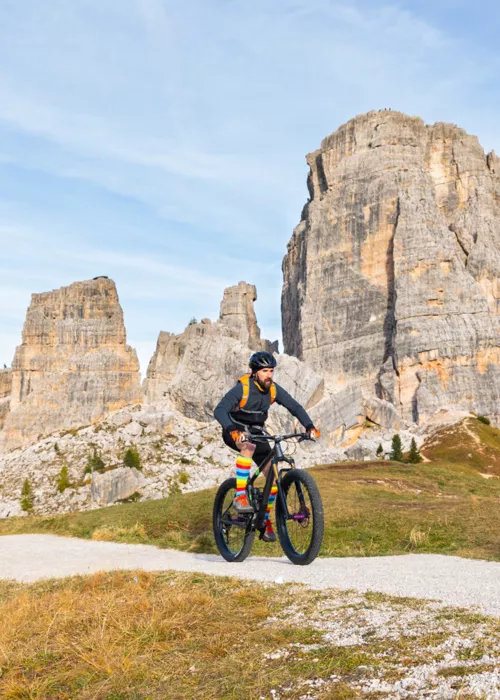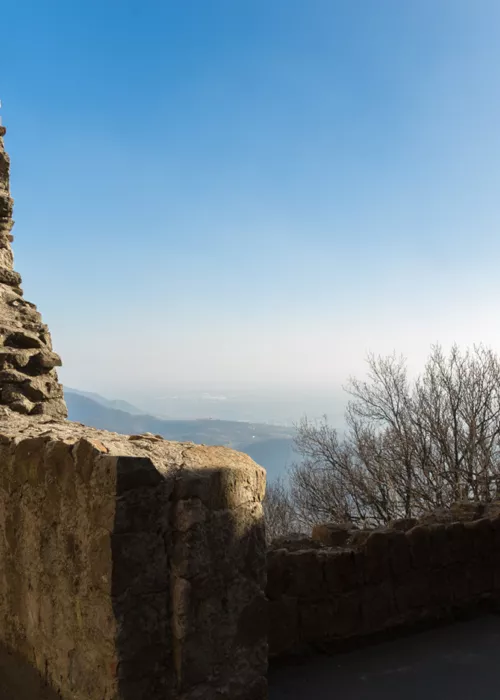From Passo Cimabanche to Calalzo di Cadore

Starting from Passo Cimabanche, the division between the Ampezzo Valley and the Pusteria Valley, it follows the route of the former Dolomites railway, built during the First World War. Old stations, tunnels and bridges over spectacular gorges are encountered along the route; the path surface, a mixture of dirt and asphalt, is almost completely closed to traffic.
On the first section of the cycle path, you will cycle through coniferous forests and natural areas of the Ampezzo Dolomites Park. In Cortina d'Ampezzo, which has always been a top destination for skiers and mountain lovers, the cycle-walking path remains at high altitude without entering the town centre. Once past the Ampezzo basin, the path runs alongside the River Boite as far as San Vito di Cadore, surrounded by two other UNESCO World Heritage sites: Mount Antelao, behind, and Mount Pelmo, in front.
Moving further away from the stream, which continues on into the valley, the track continues on along new bridges and old tunnels, passing through the picturesque villages of Vodo, Venas, Valle and Tai.
Once in Pieve di Cadore, home of the famous late-Renaissance painter Titian Vecellio, an artistic stop off awaits you: the town, in fact, preserves a considerable number of historical buildings, a Roman archaeological area, an archdeaconry church and the museum about the history of the Magnifica Comunità di Cadore.
Da San Vito di Cadore a Calalzo di Cadore

After Cortina, the route skirts the Boite torrent until San Vito di Cadore, surrounded by two UNESCO World Heritage giants: Mount Antelao, on the left, and Mount Pelmo, in front. Around you are forests of spruce, Scots pine, beech and larch that in autumn create a colourful natural mosaic. Moving further away from the torrent, which remains lower in the valley, the trail continues between new bridges and old tunnels, crossing the picturesque villages of Vodo, Venas, Valle and Tai.
Once you reach Pieve di Cadore, home of the famous late-Renaissance painter Tiziano Vecellio, a stop of artistic interest awaits you: the village in fact preserves numerous historic buildings, a Roman archaeological area, an archdeacon church and the Archaeological Museum of the Magnifica Comunità di Cadore.
Once you arrive in Calalzo di Cadore, you can go down to the lake and visit the sulphur springs and the “laghetto delle tose”. To return to the starting point, you can take a bus, or head towards Belluno by train. You can also continue by bike, following the I4 itinerary that allows, in several days, to reach first Treviso and then Venice.










